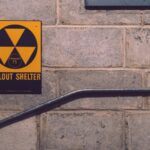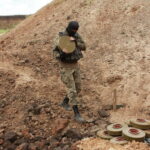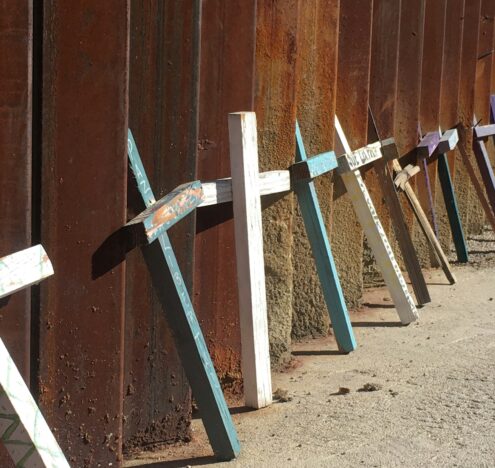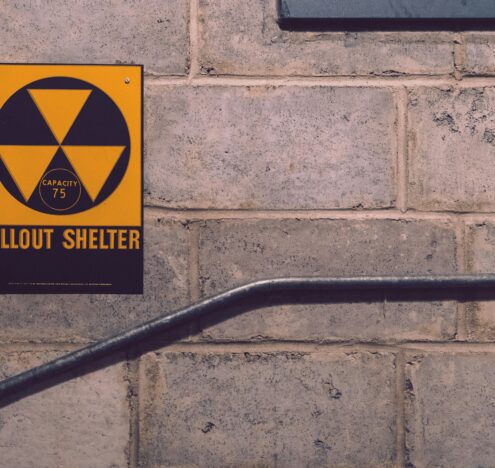This analysis was featured in Critical State, a weekly newsletter from Inkstick Media and The World. Subscribe here.
This week, Critical States continues a discussion about civilian agency in conflict by looking at another particularly stark expression of civilians having their say amid fighting: non-violent mass protests during wartime. Even in the face of overwhelming military power, civilians take public stands during conflict to demand improved treatment by armed groups, changes to political structures, or even an end to the fighting altogether.
A new article by Johannes Vüllers and Roman Krtsch in the journal Political Geography uses geographic data to determine when and where civilian protests happen during wartime. Intuitively, protests related to a conflict should be more likely to take place away from the actual fighting, since the more armed groups there are in an area the more dangerous it will be for civilians to speak out against them. Yet Vüllers and Krtsch, informed by an extensive literature about how civilians assert themselves during conflict, approached the question with the opposite assumption. They looked at the ways war both reacts to and produces political foment and hypothesized that non-violent civilian protests would actually be more likely to occur closer to battles.
A single battle in a month increases the likelihood of a nearby protest by a little over 1%, but six battles in the same area increase the chance of protest by over 35%.
Vüllers and Krtsch drew on databases of protests and civil wars in Africa between 1992 and 2013 that marked the dates and locations of individual demonstrations and battles to test their theory. Having the geographic and temporal distribution of conflict events allowed them to make statistical measures of whether various forms of violence predicted protests in the same area. After running the data, they found that they were correct: protests were more likely to happen near where battles had recently taken place. More strikingly, the more battles that were fought in an area, the more likely protests were to follow. A single battle in a month increases the likelihood of a nearby protest by a little over 1%, but six battles in the same area increase the chance of protest by over 35%. If you only look at protests against the civil war itself, the effect doubles — six battles in a province in a month makes protests against the war in that province 75% more likely.
The researchers offer a couple of different plausible explanations for why civilians might be more likely to protest as clashes between armed actors become more frequent. It’s possible that battles provide the kinds of political shocks necessary to build protest movements. People who may not have been interested in protesting — either because they were not particularly aggrieved by any governing group or because they felt the risks outweighed the benefits — might feel differently after their community or property became collateral damage in a battle. In fact, the violence might create a new political consciousness within communities, uniting people in their identity as victims of armed groups. That identity, then, can become an organizing tool that makes it easier to generate protests.
Conversely, battles could also lead civilians to demonstrate because they indicate increased, not decreased, civilian power. If there are a large number of battles in an area, control of the area — along with the loyalties of the people living there — is likely contested between two or more armed groups. In a situation where no single armed group is confident in their ability to control local civilians, civilians are in a position to demand concessions from armed groups in exchange for their cooperation. That increase in civilian power is typically short-lived — hence the close temporal relationship between battles and protests — but it gives civilians a chance to make their demands heard amid the conflict.
In either case, Vüllers and Krtsch’s data shows that civilians are active participants in the politics of civil wars, even at the point where the danger of political involvement is ostensibly highest. Civilians find ways to make their voices heard above the fighting, establishing themselves as important, independent actors in civil wars even when unarmed.



















